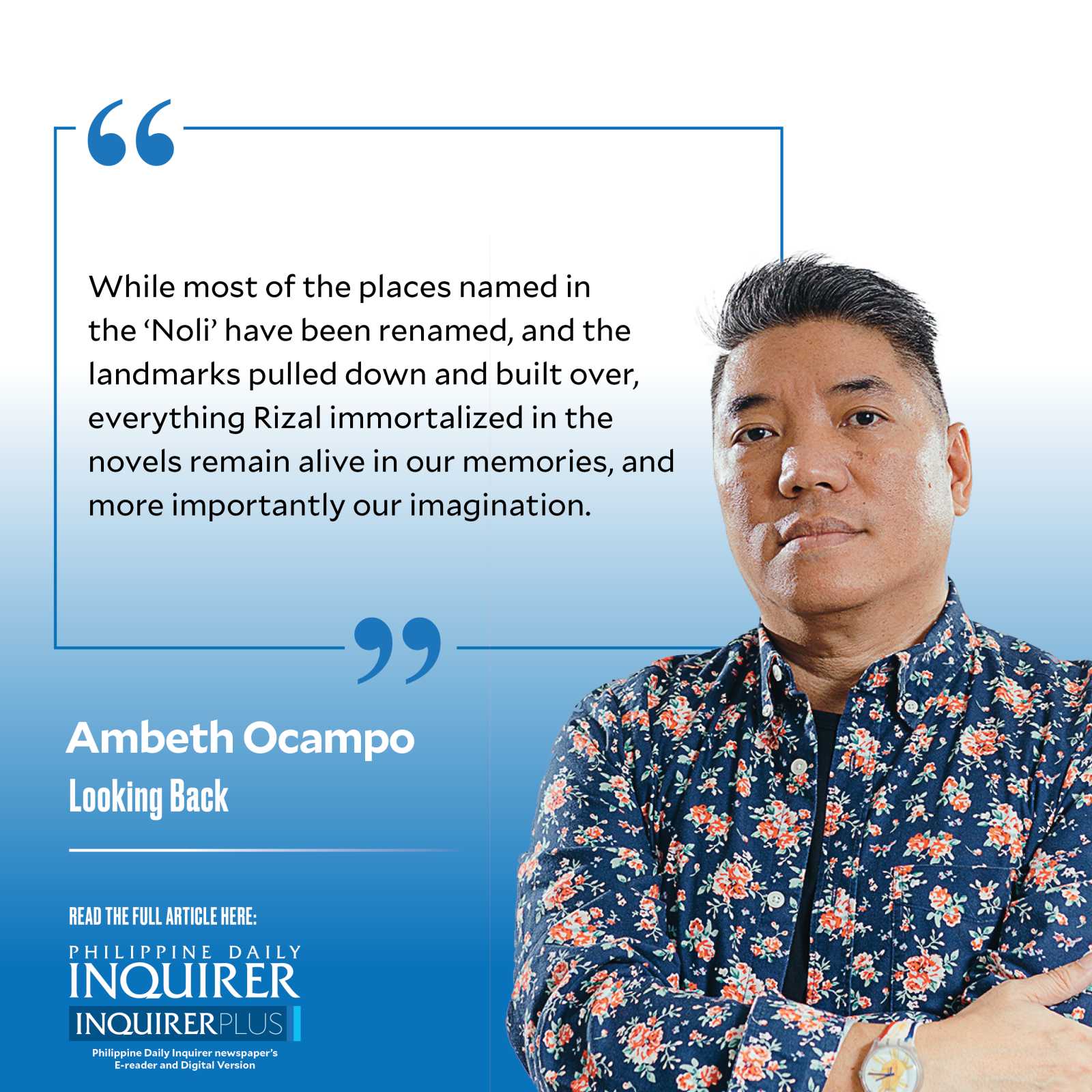History lying in plain sight

The library of Pedro Ortiz Armengol, Spanish ambassador to the Philippines (1981-1987) is now preserved in the Filipinas Heritage Library, and I intend to check it out when I have time. It was not well-known in Manila social circles that he was a literary historian, whose area of specialization covered the late 19th century particularly Benito Pérez Galdós and Jose Rizal. He published over a dozen books, three of them on the Philippines: “Intramuros de Manila” (1958), “Pasion filipina de Hermano Pule” (1992), and “Decadas Isabelinas: Viejas historias de Manila” (1995). A pity that these remain largely inaccessible to interested Filipinos because of language, and the difficulty of sourcing physical copies of the books. He is the person who could have definitively explained the uncanny similarities in plot and characters between Galdós’ “Doña Perfecta” (1876) and Rizal’s “Noli me tangere” (1887).
One Sunday morning in 1987, Ortiz Armengol asked me to drive him to Binondo. When I asked why, he replied “I will show you Rizal’s Manila.” Armed with a copy of the “Noli” in the original Spanish and an 1872 street map of Manila and its “arrabales” (suburbs), we started out in the plaza in front of Binondo church where he explained that “the look of a city may change, but its layout (its streets, rivers, and other distinguishing physical characteristics) remains the same.” Rizal’s Manila was not the area within the walls of Intramuros, rather it was outside the walls, in the suburbs known as: Binondo, San Nicolas, Santa Cruz, and Quiapo.
On that day, Ortiz Armengol showed me the sites of Kapitan Tiago’s house and that of the “Fonda de Lala.” To prepare for a walking tour of Rizal’s Binondo, I reread the “Noli” and plotted Crisostomo Ibarra’s locations and traced the route he took, and realized all these were in what we know today as Chinatown.
Kapitan Tiago’s house, where the bienvenida party for Ibarra was held, was located in Calle Anloague (now the State Investment Building on Juan Luna street). “Anluwagi” was the old Tagalog word for “carpenter.” This was one in a system of streets in San Nicolas that refer to trades like: “jaboneros” (soap makers), “aceiteros” (oilers), “fundidor” (foundry worker), even “fumadero” (that could have referred to “smokers” or people who preserve fish by smoking or perhaps even referred to opium dens).
Ibarra left the house on Calle Anloague and walked toward the Binondo Plaza (formerly Plaza de Binondo, Plaza Calderon de la Barca, and is now Plaza San Lorenzo Ruiz), he turns right, crosses Calle Rosario (now Quintin Paredes) and walks by the side of the church on Calle Sacristia (now Roman Ongpin Street), and on till the corner of Calle San Jacinto (now Tomas Pinpin Street) where he takes a horse-drawn taxi back to his hotel on Calle Barraca, the “Fonda de Lala” (Lala’s Hotel) in the “Noli” that was known by its full name “La Fonda Francesca de Lala Ary” (French Hotel of Lala Ari). The owner of the hotel was a man named Ramon Reyes Lala.
The only landmarks close to Calle Barraca are the deserted and run-down National Coast and Geodetic Survey Building and the “bahay-na-bato” where Antonio Luna was born, located near the corner of Urbiztondo and Elcano streets, across the Raja Soliman Science and Technology High School. While most of the places named in the “Noli” have been renamed, and the landmarks pulled down and built over, everything Rizal immortalized in the novels remain alive in our memories, and more importantly our imagination.
It was a coincidence that our walking tour ended in the Café Ilang-Ilang, not the swanky café of the same name in the Manila Hotel, but a more modest restaurant that serves Hokkien food rather than the Cantonese fare that we know from more high-end restaurants. Hokkien is simple and is best described as “lutong bahay ng intsik.” This street is a reminder of a perfume essence from the ylang-ylang plant that was one of the famous Philippine exports in the 19th century and was used by French perfumiers including Chanel and Yves Saint Laurent who patented a scent drawn from essence of ylang-ylang. To insure supply, Yves Saint Laurent is reported to source ylang-ylang not from the Philippines but Madagascar.
There is a small “eskinita” near Café Ilang-Ilang that has no street sign. Nobody in the area knew the name of this small street. I found out that it was once known as “Fumador.” If you read the epilogue to the “Noli,” it states that after Maria Clara entered a nunnery, Kapitan Tiago got depressed and was seen like a pauper prowling Santo Cristo street by day and retiring to a public opium den at night. In a prewar Manila street guide, I found “Fumadero” that was located between Santo Cristo and Ilang-ilang streets. If I am correct, the small unnamed street a spit away from Café Ilang-Ilang is the site of Kapitan Tiago’s opium den.
I have been exploring old Manila since I was a grade schooler in 1975, but it is only now that I am older and have read a lot more that I see the connections between past and present in these old streets, esteros, and alleys. My trips to Chinatown after the pandemic were made to buy hopia and tikoy, but background research made me see Chinatown with new eyes. It is a reminder that history lies in plain sight. Once found, history provides a deeper look and understanding of the world around us that we see but do not notice.
—————-
Comments are welcome at aocampo@ateneo.edu




















